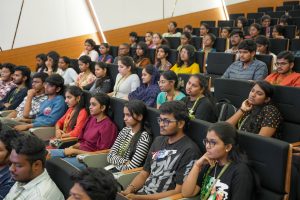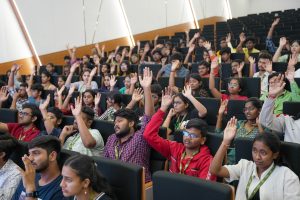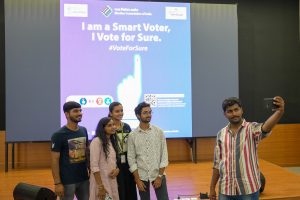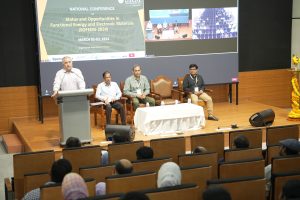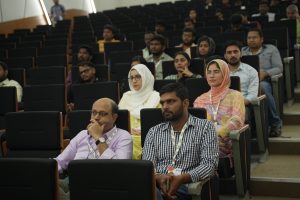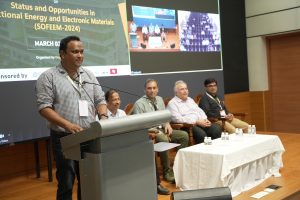Advances in Electric Vehicle Technology: A Study on Bi-Directional Converters
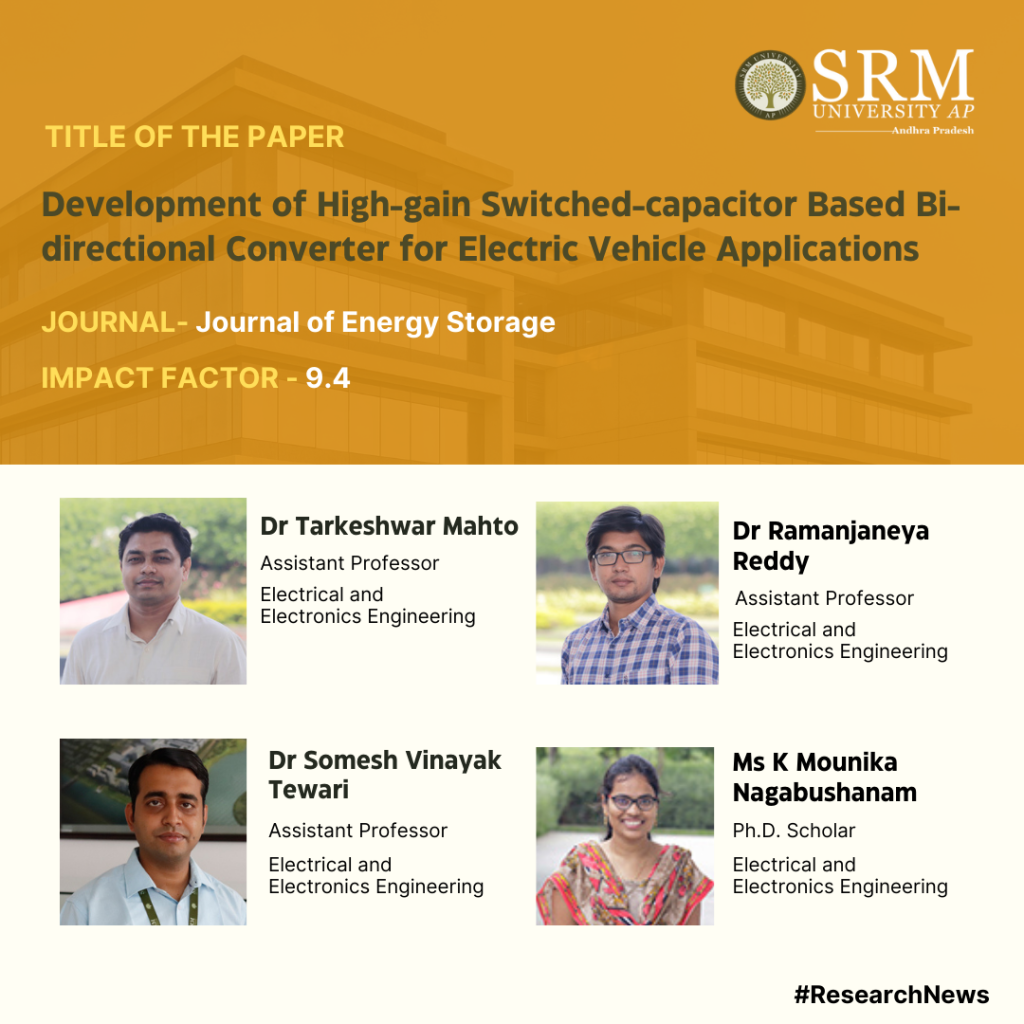
Electric Vehicles are in vogue today, thanks to the heightened environmental concerns, greater availability of models, increased cost competitiveness and improved vehicle ranges. To contribute to the growing field of electric vehicle technology, Assistant Professors, Dr Tarkeshwar Mahto, Dr Somesh Vinayak Tewari and Dr Ramanjaneya Reddy from the Department of Electrical and Electronics Engineering at SRM University-AP along with the research scholar, Ms K Mounika Nagabushanam, conducted a study and published a research paper titled “Development of High-Gain Switched-Capacitor Based Bi-Directional Converter for Electric Vehicle Applications.” The team’s research focuses on creating a bi-directional DC-DC converter that enables power flow from the battery to the motor and vice versa while maintaining necessary voltage gains and ensuring improved efficiency and low cost.
Abstract
High efficiency, high voltage transfer ratio (VTR), and low input ripple current are required in any bidirectional DC-DC converter (BDC) that plays a major role in interfacing batteries in applications like DC microgrids and electric vehicles (EVs). To meet these requirements, a switched capacitor-based BDC is proposed to interface the battery with a propulsion system via a DC Link. It has a simple circuit with only a set of switching operations, High VTR, and lesser ripple current on the low voltage (LV) side, which are advantages of the proposed High Gain Switched-Capacitor Bi-directional DC-DC Converter (SC-BDC), making it appropriate for use in EVs. The steady-state analysis, design consideration of passive components, loss and efficiency analysis are presented. Finally, the proposed High Gain SC-BDC is compared with a few of the existing BDCs in the literature. The feasibility of the converter was demonstrated by simulating a 200 W converter and validating results produced in a MATLAB environment.
Practical implementation of your research or the social implications associated with it.
The developed converter can be used in Electric Vehicle for integration of battery to traction motor.
Collaborations.
1. Majed A. Alotaibi, Department of Electrical Engineering, College of Engineering, King Saud University, 11421, Saudi Arabia.
2. Hasmat Malik, Department of Electrical Power Engineering, Faculty of Electrical Engineering, University Technology Malaysia (UTM), Johor Bahru 81310, Malaysia.
3. Fausto Pedro García Márquez, Ingenium Research Group, Universidad Castilla-La Mancha, 13071 Ciudad Real, Spain.
As part of their future research plans the team plans of working on noise reduction methods that are brought on by regeneration action and to incorporate various control techniques to keep the DC link voltage of the propulsion system constant.
We wish the team all success in their future endevours!
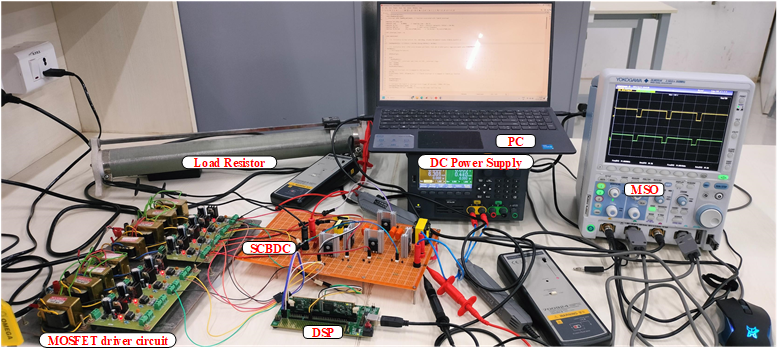
- Published in Departmental News, EEE NEWS, News, Research News
Unveiling Literary Insights on Salman Rushdie’s The Moor’s Last Sigh
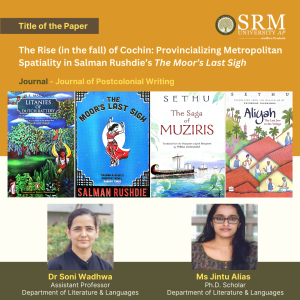 In a remarkable achievement, Dr Soni Wadhwa, Assistant Professor in the Department of Literature and Languages at SRM University-AP, and Ms Jintu Alias, a PhD Scholar, have made a significant contribution to the field of postcolonial studies with their paper titled “The rise (in the fall) of Cochin: Provincializing metropolitan spatiality in Salman Rushdie’s The Moor’s Last Sigh.”
In a remarkable achievement, Dr Soni Wadhwa, Assistant Professor in the Department of Literature and Languages at SRM University-AP, and Ms Jintu Alias, a PhD Scholar, have made a significant contribution to the field of postcolonial studies with their paper titled “The rise (in the fall) of Cochin: Provincializing metropolitan spatiality in Salman Rushdie’s The Moor’s Last Sigh.”
The paper, published in the highly esteemed Journal of Postcolonial Writing offering a fresh perspective on Salman Rushdie’s acclaimed novel, “The Moor’s Last Sigh.” Through their insightful analysis, Dr Wadhwa and Alias challenge the conventional notions of metropolitan spatiality and provide a nuanced understanding of the provincial city of Cochin.
Dr Soni Wadhwa and Jintu Alias, a promising PhD Scholar, have meticulously analysed Rushdie’s The Moor’s Last Sigh, shedding light on the complex dynamics of metropolitan spatiality and the rise and fall of Cochin within the narrative.
Their research explores Rushdie’s portrayal of Cochin, challenging traditional notions of metropolitan spaces and offering a fresh perspective on the provincial nation of such spatialities. This groundbreaking analysis delves deep into the layers of cultural, historical, and socio-political contexts within Rushdie’s work, showcasing the authors’ keen insights and critical thinking.
The publication of this paper highlights the invaluable contributions of our faculty and scholars in the field of literature and postcolonial studies. It is a testament to the rigorous academic environment and the commitment to excellence fostered at SRM University-AP.
We extend our warmest congratulations to Dr Soni Wadhwa and Jintu Alias for their remarkable achievement. Their dedication to research and passion for exploring the nuances of literature continue to inspire us all.
Explanation of the Research in Layperson’s Terms
Bombay/Mumbai is a great city widely celebrated in literature, especially for its cosmopolitanism. Salman Rushdie’s novel The Moor’s Last Sigh has been read by various critics for the richness of the portrayal of Mumbai. In their research, PhD scholar Jintu Alias and her PhD supervisor Dr Soni Wadhwa have analysed the representation of Cochin in the novel. Regarding their research they say, “For very long, Cochin’s presence has been eclipsed by that of Mumbai. But there is more to the novel than Bombay’s history. Like any art or literature, this novel is open to multiple interpretations. Our study is focused on the depiction of space in postcolonial literature with a focus on the island city Cochin in Kerala. When we immersed ourselves into the novel, we found that its charm is irresistible. Rushdie primarily opened a new city for other writers to explore. This novel was followed by several more novels that took an even closer look at the history of Cochin (now Kochi).”
Abstract
Indian fiction and critical engagements with it have a metropolitan bias. The preference for representations of big cities such as Mumbai in fiction means that non-metropolitan (“provincial”) spaces in India face neglect, literary and otherwise. This article argues for provincialising Indian fiction by exploring non-metropolitan locations as imagined in works of fiction to unpack alternative spatiality. The example offered is Salman Rushdie’s The Moor’s Last Sigh. In most readings of the novel, Bombay (along with Moorish Spain) is highlighted as a metropolitan model for India. Cochin does not figure in these readings, which are passed over as if just a random background or setting for the characters to be launched into Mumbai. This article addresses Cochin’s marginalisation by investigating how the island city offers a provincial, alternative, non-metropolitan theorisation of spatialities in Indian fiction. The larger objective is to make space for similarly marginalised non-European locales in the discourse of cosmopolitanism.
Social Implications
- We hope that with this interpretation of the novel from the point of view of Cochin and its history and cosmopolitanism, smaller cities in India get more attention from literary critics.
- We also hope that our research excites further studies and creative writing on other aspects of cultural traditions practised in smaller cities in India. There are many more themes and historical and geographical settings to explore in Indian literature!
Future Research
In continuation of our method of reading different Kochi texts, we will engage with more novels in the future. Our previous reading of another Kochi novel was published in Modern Jewish Studies in September 2023. We look forward to strengthening this body of work in the future.
About This Collaboration
PhD scholar Ms Jintu Alias and Assistant Professor Dr Soni Wadhwa have been working on this area of the Kochi novel since May 2021. This has been an exciting spatiality project in the context of Indian literature.
Citation
Alias, J., & Wadhwa, S. (2024). The rise (in the fall) of Cochin: Provincializing metropolitan spatiality in Salman Rushdie’s The Moor’s Last Sigh. Journal of Postcolonial Writing, 1-13. https://doi.org/10.1080/17449855.2024.2307408
- Published in Departmental News, English Current Happenings, News, Research News
Igniting the Flame of Democracy: ‘Mera Pahala Vote Desh ke Liye’ Initiative
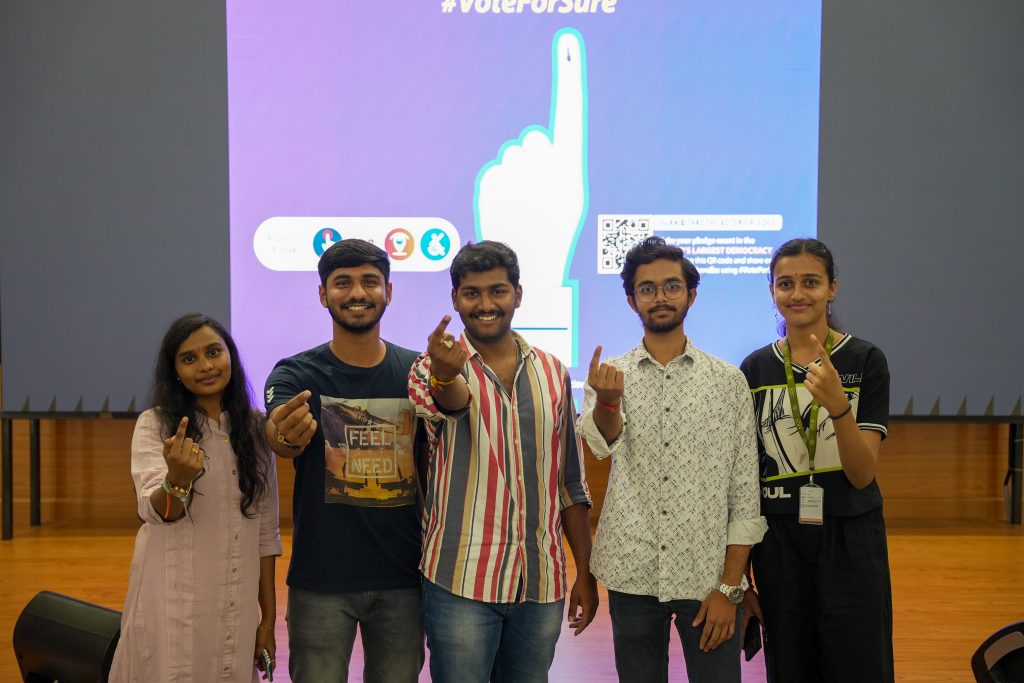
The campus of SRM University-AP was abuzz with a palpable energy as the Directorate of Student Affairs hosted the electrifying “Mera Pahala Vote Desh ke Liye” (My First Vote for the Nation) initiative on March 07, 2024. In a powerful display of civic engagement, students rallied together to celebrate the essence of democracy and ignite the flame of active citizenship.
The event kicked off with a captivating video screening that transported attendees on a journey through India’s vibrant democratic tapestry. Stories of ordinary citizens whose votes reshaped destinies unfolded before their eyes, reminding them of the transformative power they wield with a single mark on the ballot.
As the last frame faded, a solemn hush fell upon the gathering, and a collective pledge echoed through the halls. Students’ voices, united in purpose, vowed to exercise their constitutional rights and make their voices heard in the democratic process. The atmosphere crackled with determination and a renewed sense of responsibility.
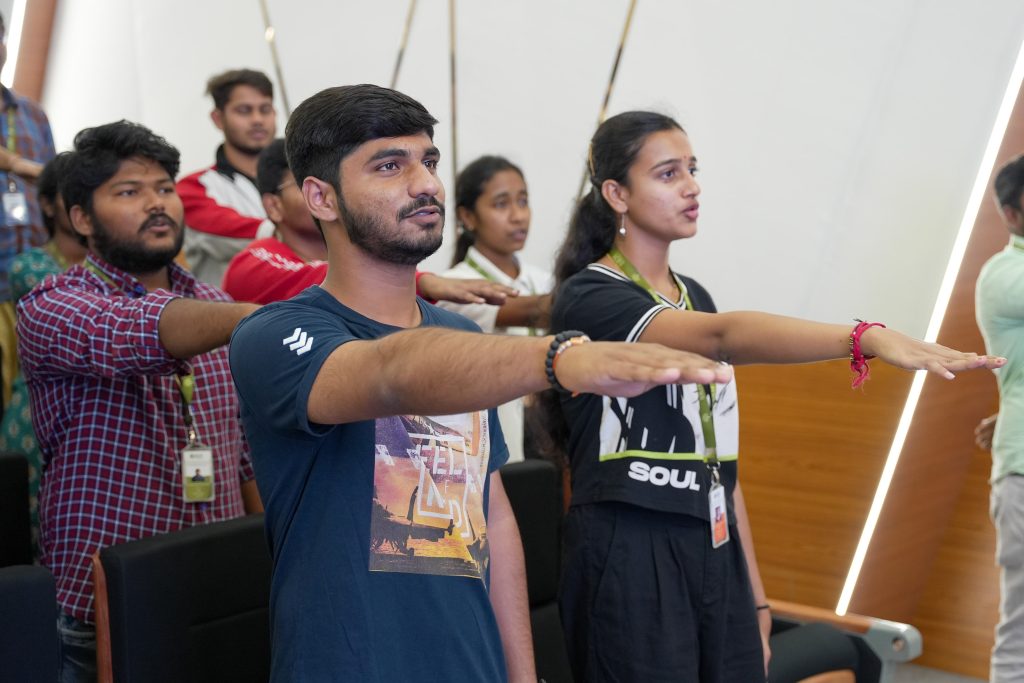
But the celebration didn’t stop there! In a burst of youthful enthusiasm, a dedicated selfie point sprung to life, capturing the infectious energy of the moment. Students eagerly posed, their smiles radiating pride and purpose as they immortalised their commitment to shaping the nation’s future.
SRM University-AP‘s commitment to nurturing responsible citizens was displayed as the institution partnered with the Election Commission of India to kindle the flame of democratic participation. With each selfie shared and pledge taken, a powerful message resounded: the future belongs to those actively shaping it.
As the event drew to a close, the campus hummed with a renewed sense of purpose, a collective awakening to the responsibilities and privileges of being citizens of the world’s largest democracy. The ‘Mera Pahala Vote Desh ke Liye’ initiative has undoubtedly left an indelible mark, igniting a fire within the hearts and minds of SRMites – a fire that will guide them as they navigate the intricate tapestry of India’s democratic journey.
- Published in News, student affairs news, Students Affairs Events
SOFEEM-2024: A National Conference on Functional Energy and Electronic Materials
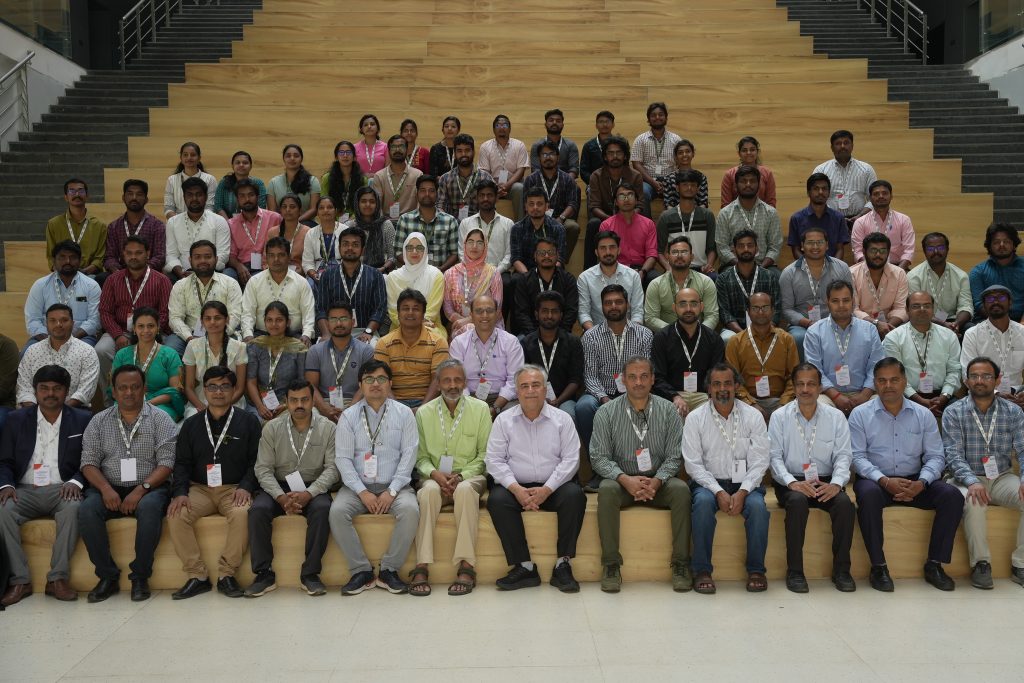
SRM University-AP hosted a national conference on “Status and Opportunities in Functional Energy and Electronic Materials” (SOFEEM-2024) on March 02-03, 2024. The conference was organised by the Department of Physics and was supported by the Department of Science and Technology, Government of India. The conference brought together about 100 participants from various reputed institutions, national laboratories, and universities from India. They shared their research outcomes and discussed the various frontier energy technologies and smart electronic devices.
The main theme of the conference was to boost the development and optimal use of renewable energy and to promote sustainable energy and intelligent electronics. The conference focused on fostering collaboration among researchers and practitioners to explore cutting-edge developments in these domains and pave the way for innovative solutions. A diverse array of topics was covered, including:
- Synthesis and processing of novel energy and electronic materials
- Modelling of low-dimensional materials
- Materials and catalysts for green hydrogen production
- Electrolyte and electrode materials for high-performance batteries and fuel cells
- Functional materials for supercapacitors
- Device fabrication using novel energy materials for energy conversion and storage
- Low-dimensional materials in electronics and photonics
The conference was inaugurated by Prof. Manoj K Arora, Vice Chancellor, who welcomed the guests and the delegates and highlighted the university’s achievements and vision. He also emphasised the importance of interdisciplinary research and innovation in addressing the global energy and environment challenges.
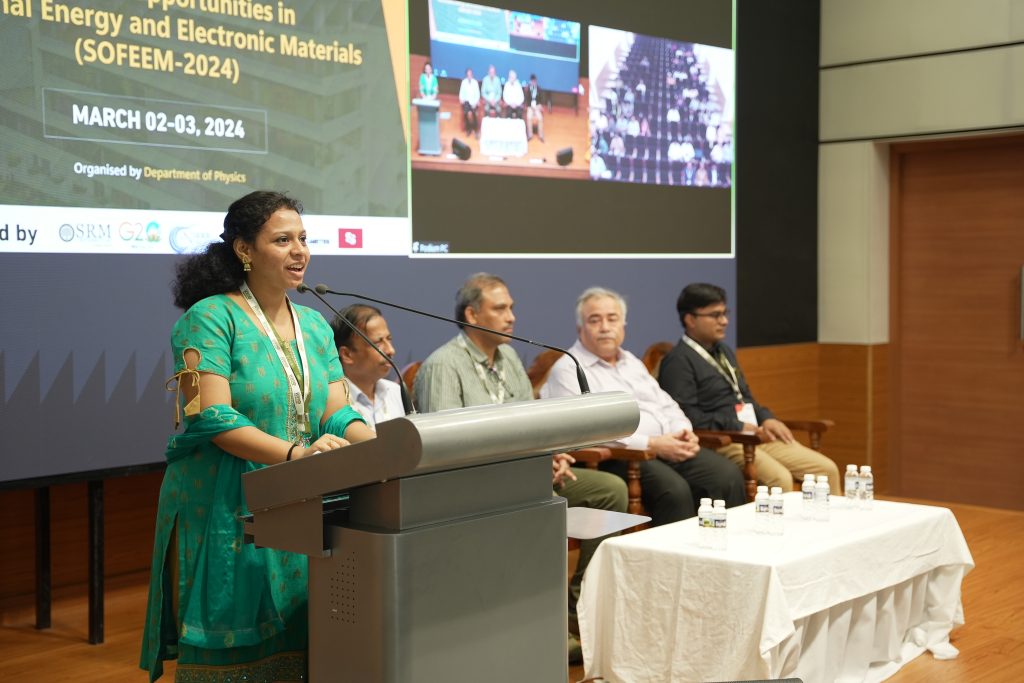
The conference featured keynote lectures, invited talks, oral presentations, and poster sessions by experts and young researchers. Distinguished Keynote speakers from IIT Madras, along with Invited speakers from prestigious institutions such as the Indian Institute of Science (IISC) Bangalore, IIT Tirupati, IIT Hyderabad, University of Hyderabad, IISER Bhopal, and the CSIR – Central Electrochemical Research Institute (CECRI) in Tamil Nadu, among others from esteemed state universities, shared their groundbreaking research. The conference provided a good platform for the participants to interact with the eminent researchers to enrich and share their knowledge in their respective fields of research and engage in potential collaboration to develop innovative technologies in the areas of sustainable energy, advances in materials research and computational sciences. In addition, research scholars from nearby universities (such as VIT-AP, Vignan University, Acharya Nagarjuna University, and SRM-IST) participated in the conference and showcased their current research works.
The conference concluded with awards for the best poster and oral presentation by research scholars, celebrating their significant contributions to the field. The conference concluded with a valedictory session, where the best oral and poster presentations were awarded, and feedback from the participants was collected. The conference was well-received by the attendees, who appreciated the quality and diversity of the scientific discussions, as well as the university’s hospitality and facilities.
- Published in Departmental News, News, Physics News


